Cannabinoid Hyperemesis Syndrome (CHS) - Diagnostics and Treatment

Daily and long-term use of cannabis can cause a rare condition known as CHS cannabinoid hyperemesis syndrome. As a result, the stoner can experience various issues. Some of them are nausea, unsettled stomach, to name a few.
Many researchers tried to give more details on CHS and its causes, but it requires more studies as it is the newly described condition. The first cases were spotted in 2004 in South Australia, where doctors started treating cannabis users for vomiting, stomach pain, and more. The people who experienced the problems doctors treated were long-term cannabis users.
Diagnosing the condition is often tricky, considering that many users go for treatment without mentioning using marijuana. In most cases, the symptoms disappear entirely once the user stops consuming cannabis. However, as legalization is still in progress, the number of people using marijuana is increasing, and so is the number of those with CHS weed issues.
The CHS is a rare phenomenon. In most cases, it occurs in people who use marijuana for years (usually 1-5), a few times per day (3-5 times). It is not the condition that affects all smokers, but every user should know the right dose and should not abuse the substance. If you notice any health issues, make sure to contact your doctor first.
Main Causes of Cannabis Hyperemesis Syndrome
Some research suggests that cannabis hyperemesis syndrome is caused by the daily and long-term use of marijuana. The number of people diagnosed with CHS is greater than before. The increased number of cases correlates with the fact that more states in the US legalized marijuana. However, the number of regular users who develop weed sickness is not high. Some studies suggest that genetics plays its part. There is a lack of evidence that would fully support the current theories around CHS, which is why further research is necessary.
Cannabis has several active components, and since it is very complex, it affects every user differently. One of its main ingredients is THC that features anti-nausea effects. But what has been noted is that if someone uses cannabis regularly for an extended period, the results could be the opposite. Some theories suggest that THC can make cannabinoid receptors act contrary to how they should behave. As a result, the consumer may experience cramps, vomiting, stomach pain, and other issues.
Read Also: What Are the Possible Side Effects of THC or Cannabis Use?
CHS Symptoms and Phases
The symptoms of CHS are divided into three main phases. The first is called the prodromal phase, the second is hyperemetic, and the third is the recovery phase.

Prodromal Phase
The prodromal phase is the first one, and the symptoms in this stage are usually abdominal pain, morning nausea, and urge to vomit. Other symptoms can be skin flushing, body temperature changes, and sweating. While this phase is on, most people will continue to eat normally. In addition, most users will continue to consume cannabis, thinking it will help them stop nausea and vomiting. The prodromal stage can last for a long time, in some cases for a couple of weeks, months, and even years.
Hyperemetic Phase
The second stage is called the hyperemetic phase, and during it, the vomiting is often pretty intense. To ease nausea, people will mostly use hot showers throughout the day. Some people take marijuana to ease nausea, but it only makes the situation worse.
The symptoms in this phase include feeling sick and nauseous, throwing up after smoking weed, dehydration, stomach pain, disturbance of eating patterns, reduced food intake, and weight loss. The syndrome represents a real medical issue. Extreme vomiting and intense tummy pain can plausibly lead to scromiting (the combination of screaming and vomiting). The phase lasts until the consumer stops with marijuana usage.
Read Also: Medical Marijuana — What You Should Know
Recovery Stage
The last of three phases is the recovery stage. It starts the moment the user stops consuming cannabis. During this phase, all the symptoms will go away, and the person will go back to the standard eating patterns. In addition, people in the recovery phase generally feel better. The need for several hot showers or baths throughout the day will disappear as well. The stage can last from a couple of days to a few months. If an individual decides to turn back to marijuana by any chance, the symptoms will most likely return.
Diagnosis of the Sickness
Various health issues can cause repeated vomiting, and what needs to be pointed out is that CHS is a rare condition. The healthcare provider will ask the patient about the symptoms, and it will also ask about past health and issues if there were any. Then, a physical exam is necessary, including a stomach exam.
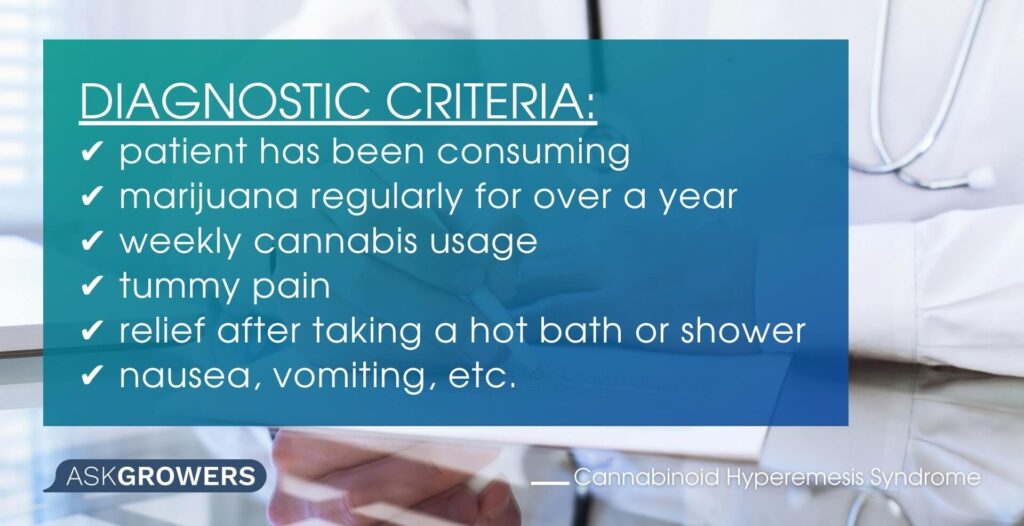
One of the things that can make the diagnosis faster and a lot simpler is admitting the consumption of marijuana to the doctor. For many health care providers, diagnosing the syndrome can be pretty challenging and can take a lot of time and effort. The main reason for that is that the patient does not report and mention their use of cannabis.
There are specific criteria to diagnose the syndrome. The first one is the patient has been consuming marijuana regularly for over a year. Some other things that can play a significant role are weekly cannabis usage, tummy pain, relief after taking a hot bath or shower, nausea, vomiting, etc. Other things that are considered are morning nausea, age (if the person is younger than 50), weight loss, and disturbed eating patterns.
Read Also: 7 Best Marijuana Strains for Overall Good Health and Disease Prevention
Cannabinoid Hyperemesis Syndrome Treatment
If the health care provider diagnoses the CHS, it will be explained to the patient what is cannabinoid hyperemesis syndrome, and then it is the treatment time.
One of the first steps doctors suggest is to stop consuming marijuana. If a person experiences extreme vomiting and nausea, hospitalization that may last a few days could be necessary.
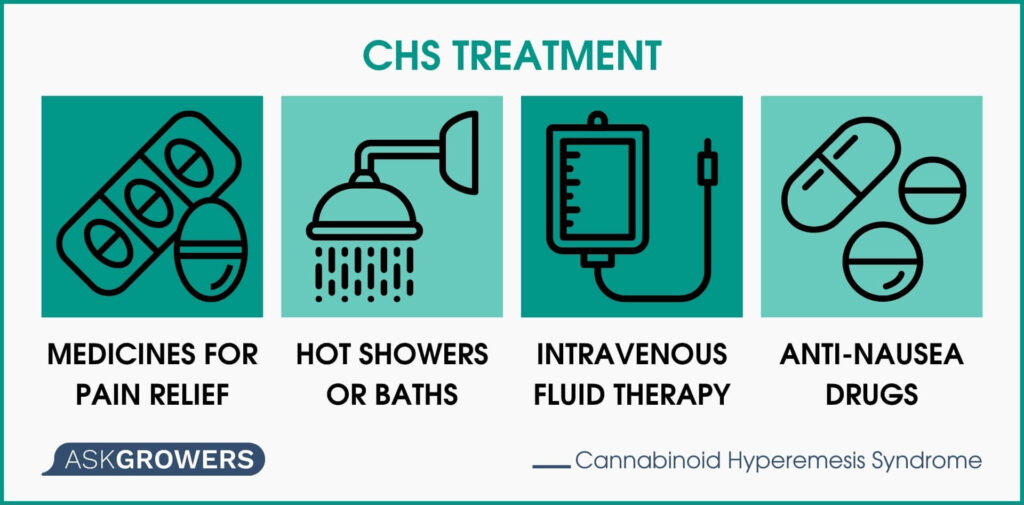
During the second phase, known as the hyperemesis phase, the patient might need treatment, such as:
- Medicines for pain relief and anti-sickness
- Constant hot showers or baths
- Intravenous fluid replacement
- Anti-nausea drugs
All of the above are short-term treatments. The only option to treat the condition long-term is to stop using marijuana.
In most cases, the symptoms of the syndrome will disappear pretty fast. The patient may feel much better in general within a few days, usually one or two. However, the symptoms can come back if the person starts consuming cannabis again.
Read Also: Long Term Effects of Daily Marijuana Use
Prevention and Consequences If Untreated
The only way to prevent cannabinoid hyperemesis syndrome is the complete absence of marijuana consumption. Unfortunately, people tend to consume cannabis for years and become chronic users before the CHS develops. That’s because the development of the syndrome takes a lot of time.
When a person has the symptoms, especially vomiting, it may cause additional issues such as dehydration. In addition, if the condition is not treated, some other complications may arise, such as weakness, muscle spasms, shock, to name a few. In the most severe cases, cannabinoid hyperemesis syndrome can lead to kidney failure that can cause death.
Conclusions
The CHS is caused by regular marijuana consumption. When the syndrome develops, which takes a few years, the consumer will experience various problems such as nausea, throwing up, weight loss, disturbed eating patterns, etc. The symptoms take three phases, and they can be extremely severe, especially in phase two.
The diagnosis of the syndrome is one of the trickiest parts of the story because people often fail to report using marijuana to their health care providers. Once the syndrome is finally diagnosed, the patient gets familiar with the condition, learns what CHS is, and begins treatment. The most important part of the recovery process is the stopping of weed consumption. If the patient continues to consume, the symptoms will come back.
The condition is a rare phenomenon and it does not affect all smokers. Every marijuana user should know the right dose. When the marijuana consumer experiences extreme vomiting for one whole day or more, contacting the health care provider is the best possible option.
Disclaimer: The information in this article is for educational purposes only and should not be used as a substitute for any prescribed medication. See your doctor first!

 Health
Health

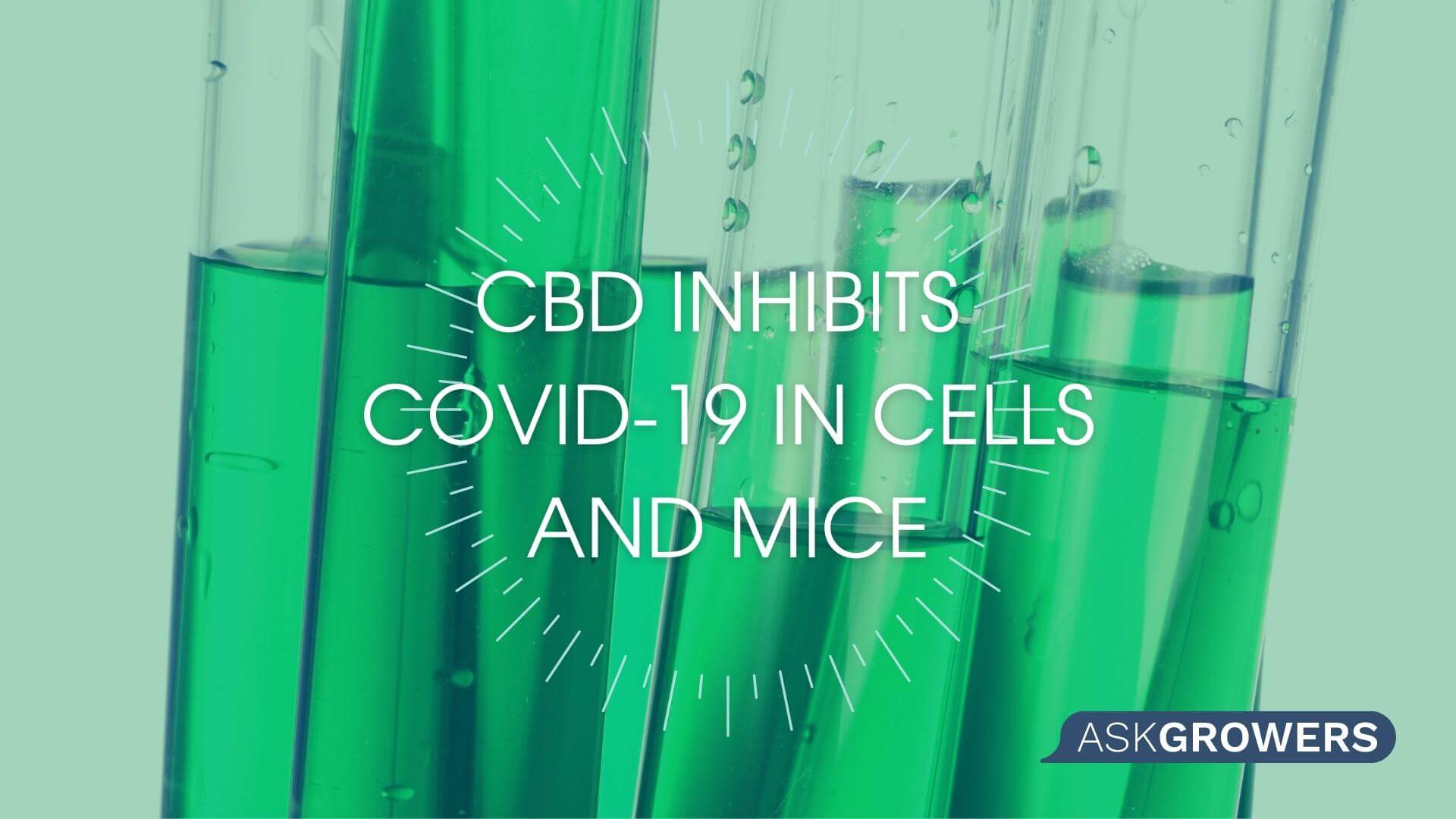



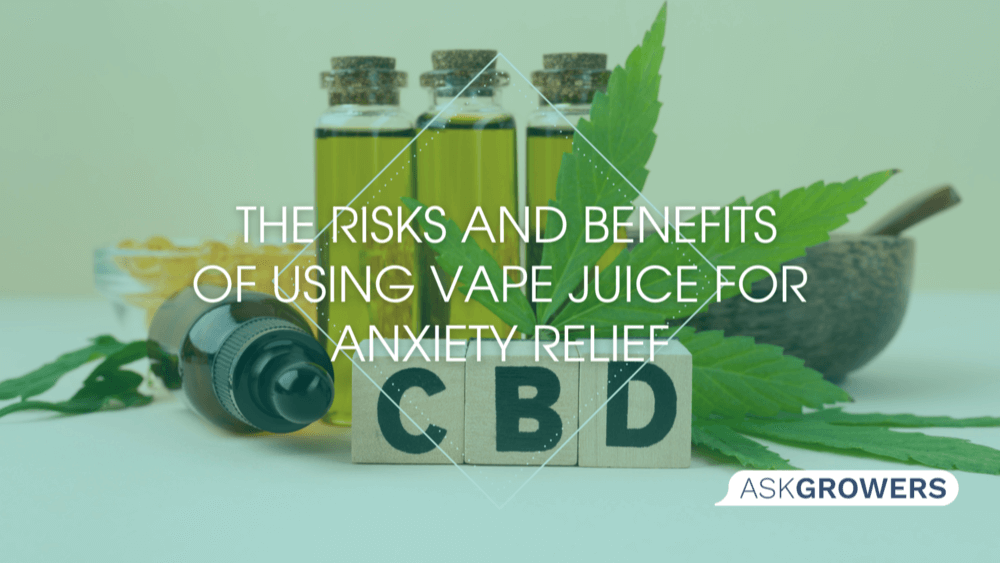

 (1).png)

.jpg)

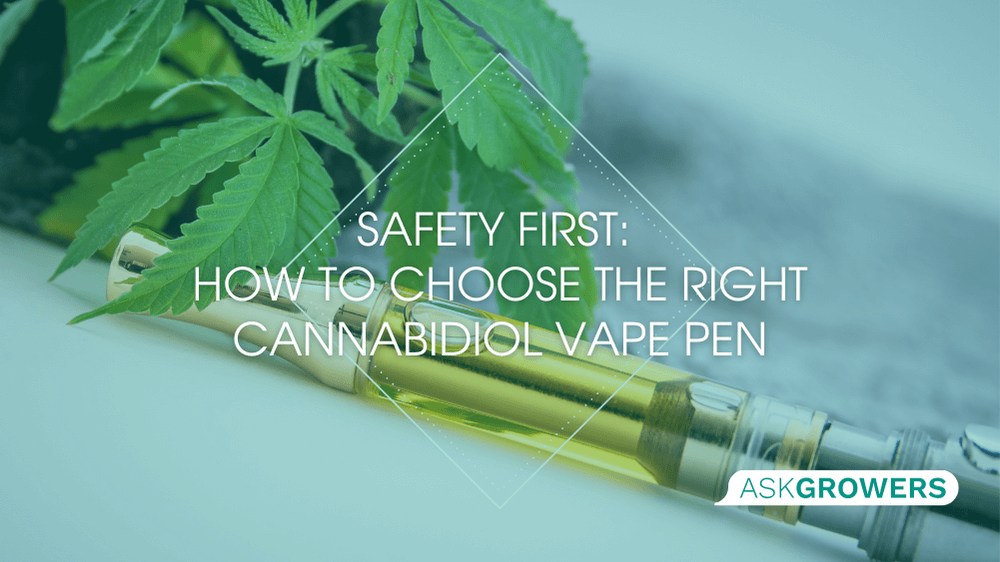
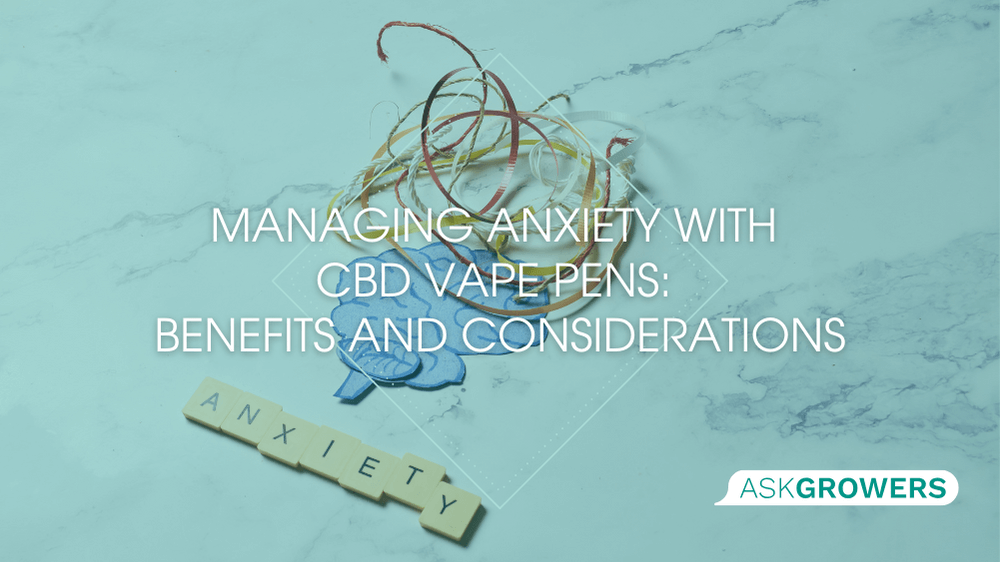

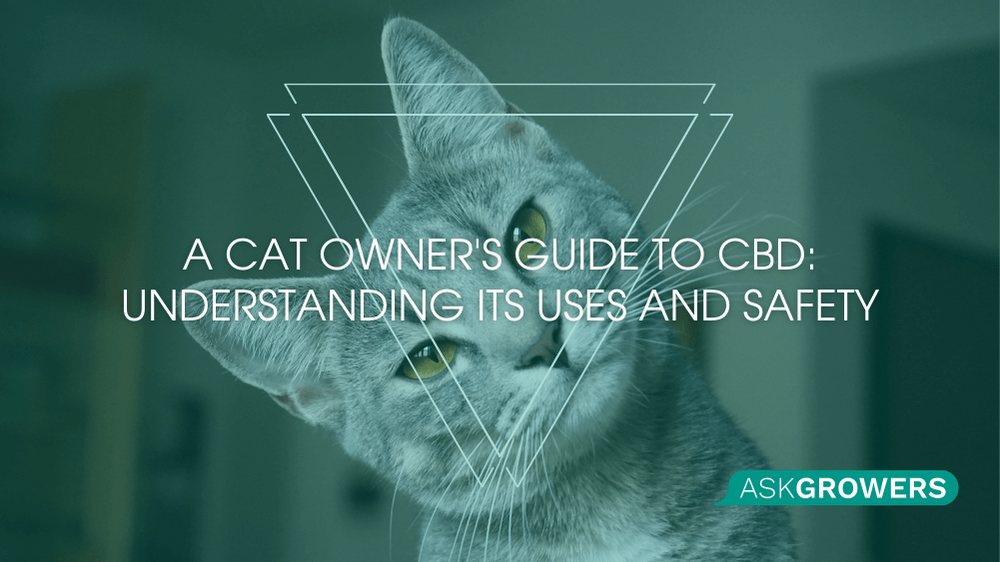
Be the first and share your opinion
Write a Review